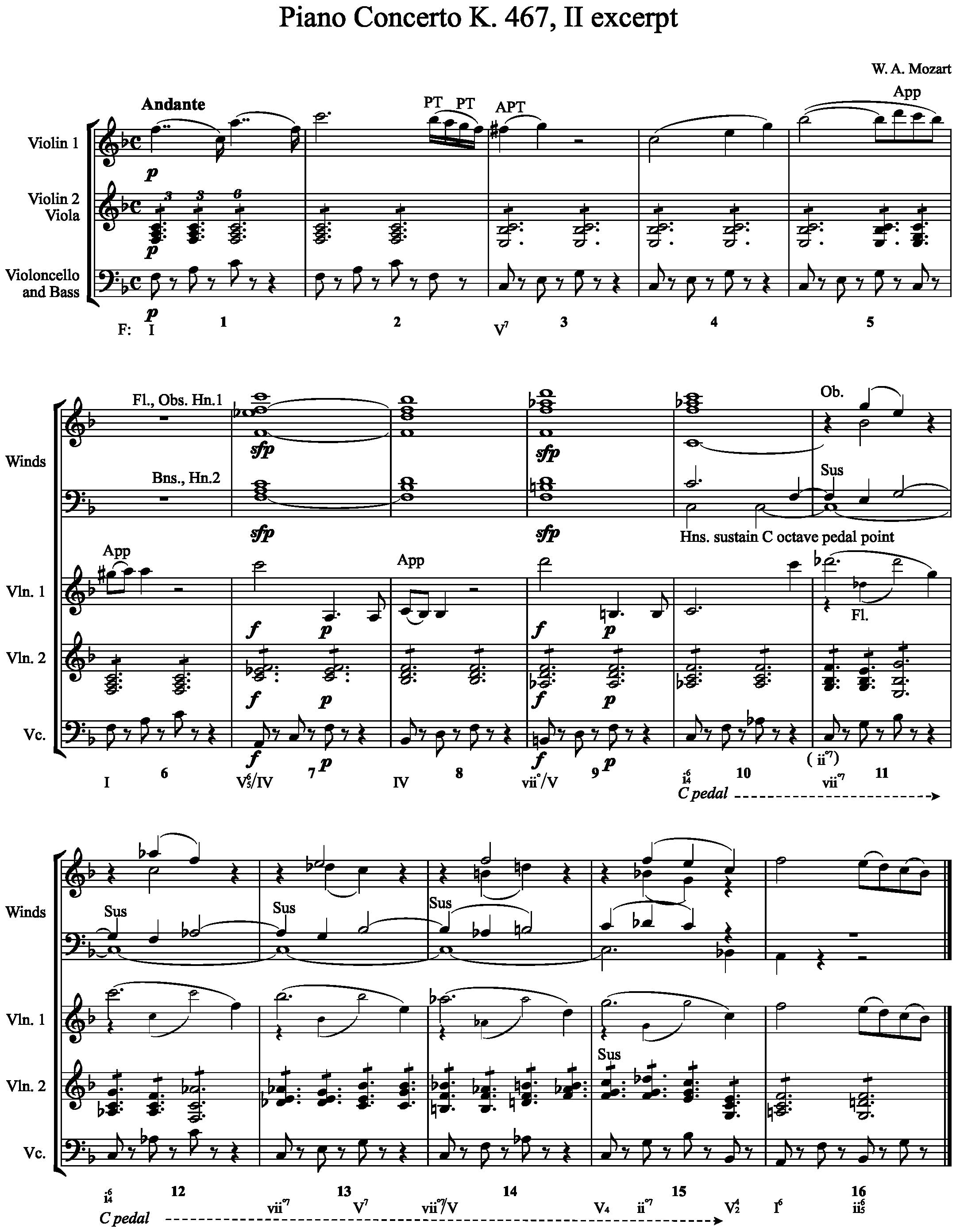
Mozart Piano Concerto No. 21, K. 467
Great Piano
Concertos
 |
Mozart Piano Concerto No. 21, K. 467 |
Great Piano |
When you talk about the great piano concertos, you have to start with the work of Wolfgang Amadeus Mozart, who is widely acknowledged as the creator of the form, and the first composer to leave a substantial contribution to the genre. His body of work coincided with the growing popularity of the pianoforte, the instrument that would surpass all other keyboard instruments in popularity and become the entertainment centers for all homes with an interest in culture in the nineteenth century and beyond. Piano Concerto No. 21, K. 467, written in 1785 along with two others is particularly noteworthy because of its innovative style and perfection of the form. The first and third movements are exemplary examples of sonata-allegro and rondo forms for the classical concerto. There is the ever-present dialogue between the piano soloist and the orchestra, especially strings and solo woodwinds, and very effective usage of the cellos and string basses as part of that dialogue. It’s the second movement, however, that is the most interesting to look at because it provides us with a futuristic window into the next great era of music, romanticism. We all know it has a quirky theme, used as a sound track in a rom-com movie (Elvira Madigan), because it can evoke thoughts of inner emotions perhaps in rainy spring weather. But what makes it so appealing and unique? What does its description as a window into the romantic era really mean? Click on the player to listen while you check out our score excerpt: |
 |
It starts out as a simple slow movement in F major, the typically used subdominant key to C major. We hear triplets in the accompaniment of second violins and violas against a triadic bass line in the cellos and string basses. However, as the first violins state the theme, they are playing in duple meter against the triplets, three against four or two against three. This kind of rhythmic conflict is a hallmark of romantic era music. Another odd feature is that the tune is stated first in three bar phrases, not the typical two or four. Mozart makes a point of accenting dissonances, like the chromatic accented passing tone in measure three of our excerpt score, followed by upper and lower appoggiaturas in measures 5 and 6. The wind players, a flute, 2 oboes, 2 bassoons, and 2 horns, enter with background harmonies in measure 7, while the first violins present us with another characteristic of romanticism, a wide melodic contour of over two octaves, perhaps the idea of two voices within the same line. Then comes a remarkable passage of tension and pathos, as Mozart piles on a sequential chain of dissonances set up in measure 9 by the first of a series of diminished seventh chords. The chord in measure 9 is a diminished seventh of five, which you would expect to be followed by a dominant chord, but instead Mozart substitutes a minor tonic six-four chord and starts a long pedal point on C in the horns, second bassoon, and downbeat notes of the lower strings. To add to the tension, there is a sequence of suspensions, which is best shown in the first bassoon part. This sequence adds to the sighing effect of the passage. Two our modern ears, some of the suspensions sound like common modern era chords. One could describe the downbeat of measure 11, for example, as a G half-diminished chord over the C pedal. Especially noteworthy is measure 14, where Mozart is quite legally giving us a full beat of B flat, B natural, and C sounding at the same time. J. S. Bach would be proud. After six bars of the suspensions and diminished seventh chords on top of the C pedal point, Mozart finally uses a third inversion dominant seventh chord to go back to a first inversion tonic chord in F major. The melody then finishes with first a deceptive cadence, another typical feature in romantic era melodies and ends at last with a perfect authentic cadence on F. All the theory aside, hearing this music makes you wonder what kind of writing Mozart would have produced had he lived longer. Certainly this concerto has had influence on so many later generations of music. |